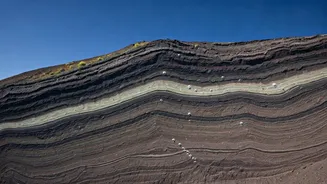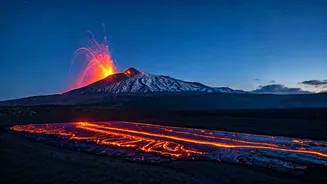Decoding Seismic Signals
The recent research has unveiled a new seismic signal that provides crucial clues about Mount Etna's eruption patterns. This breakthrough involves analyzing
subtle seismic activity deep within the volcano. By examining these signals, scientists can gain a deeper understanding of the processes leading to eruptions. The study emphasizes the importance of meticulously analyzing seismic data to detect early warning signs. Understanding the nature of these seismic clues is essential to improving eruption forecasting. The novel approach offers a new lens through which to view volcanic behavior, helping to anticipate and potentially mitigate the impact of future eruptions. The discovered seismic signal is expected to be a key element in future predictive models.
Etna's Eruption Dynamics
Mount Etna, one of the most active volcanoes in the world, presents unique challenges in predicting its eruptions. The volcano's complex internal structure and frequent activity require advanced monitoring techniques. Scientists have been working tirelessly to understand the dynamics that drive the volcano's eruptive behavior. Previous prediction methods have had limitations, making this new discovery all the more significant. The new seismic clue provides an opportunity to refine forecasting models. Analyzing the seismic signals allows scientists to identify precursors to eruptions. This insight helps to evaluate when an eruption is likely to occur, its magnitude, and potential impact. This study provides a vital contribution to volcanology by improving the capacity to forecast these natural events.
Impact and Implications
The discovery of a new seismic clue has considerable implications for volcano monitoring and public safety. Improving eruption forecasts allows authorities to issue timely warnings, giving nearby communities adequate time to prepare. The new findings may also influence future research. By integrating this new clue into existing monitoring systems, scientists can refine their predictions. This will improve the accuracy of eruption forecasts and protect communities living near active volcanoes. It also underscores the importance of continued research into the complexities of volcanic systems. The ability to forecast eruptions accurately is crucial for mitigating risks and preserving lives. With enhanced prediction capabilities, scientists can develop more effective strategies to manage and prepare for volcanic events.














